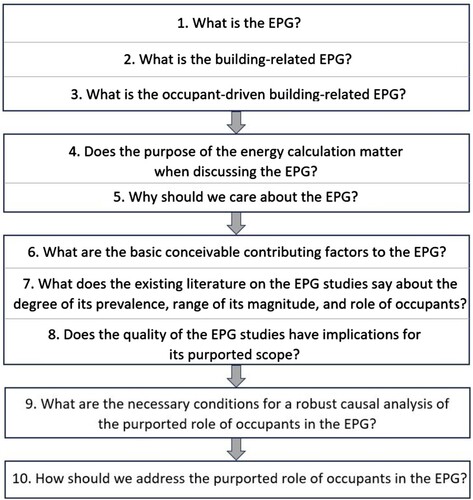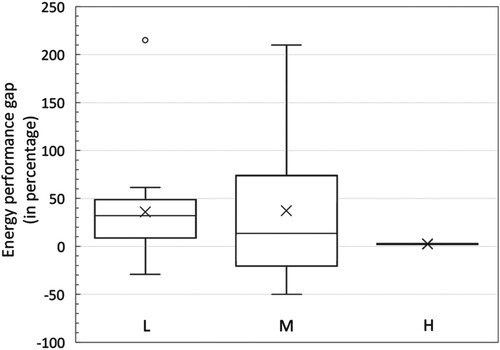Figures & data
Figure 1. Overview of the 10 questions regarding buildings, occupants and the energy performance gap.

Figure 2. The EPG magnitudes (in %) in the reviewed publications for both residential (‘R’) and non-residential (‘NR’) buildings. Thereby, the data in this graph is based on 43 and 17 studies for residential (‘R’) and non-residential (‘NR’) categories respectively (adapted from Mahdavi et al. Citation2021).

Figure 3. Evaluation result concerning data quality, separated in three levels: ‘L’ indicates low, ‘M’ indicates medium and ‘H’ indicates high in the reviewed studies. Thereby, the data in this graph is based on 22, 26 and 3 studies for the levels L, M and H respectively (adapted from Amin, Berger, and Mahdavi Citation2022).

Figure 5. Illustrative depiction of the influences of competing and confounding variables relevant to the examination of the purported causal role of occupant behaviour (OB) with respect to the energy performance gap (EPG).

Table 1. Compact description of the instances of competing and confounding variables in the causal study of occupant-driven energy performance gap.

